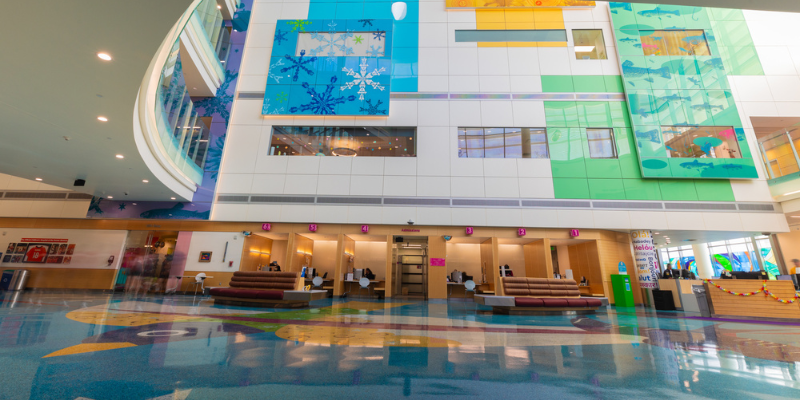March 5, 2020 marked the anniversary of the first confirmed case of COVID-19 in Colorado. Just a few days later, on March 10, Governor Polis declared a state of emergency and soon thereafter most of us were working from home and living in full pandemic mode.
The CCTSI responded by issuing a rapid-release RFA to address COVID-19. CCTSI leaders called it the COVID-19-Rapid Research Pilot Program. They released the RFA on Monday evening, March 30 and closed the application process just four days later. This new pilot grant program supported the development of novel diagnostic and treatment methods and innovative technologies related to the COVID-19 outbreak. Fifty-five people applied and the CCTSI chose four awardees. The following is a summary of what each awardee has accomplished and learned over the past 14 months.
Addressing the lack of PPE
The first awardee is David Prawel, PhD, associate research professor in Mechanical Engineering from Colorado State University. His project was conceived to provide a safe, respirating face mask that is ready to be mass produced through injection molding.
In March of 2020, hospitals across Colorado were experiencing shortages of Personal Protective Equipment (PPE). In the short term, Dr. Prawel and colleagues from CSU started meeting local hospitals’ immediate needs by 3D-printing face shields. Under the CCTSI COVID-19 Related Research Pilot award, they created a design for a mask that would be as effective as an N95. “Our masks stack up exactly the same as N95s in terms of effectiveness. But our mask has a whole lot better fit and has a filter that can disinfected and reused.” says Prawel.
CSU’s Center for Energy Development and Health (CEDH) was the primary testing site. The 3D printed masks underwent particle filtration efficiency and pressure drop testing to evaluate their ability to meet NIOSH N95 performance standards. “The final design we tested for Dr. Prawel’s team successfully met the NIOSH N95 performance requirements,” says Christian L’Orange, PhD, PE, PMP, assistant professor of research in Mechanical Engineering.
Fortunately, the severity of the pandemic is waning and the need for PPE much lower. “Right now, there is not a demand to make the molds. However, if it [a pandemic] ever happens again, these designs are ready. It would take about two months to make tooling, molds and get 100,000 masks made,” Prawel says.
Convalescent plasma
When David Beckham, MD, associate professor in infectious disease in the School of Medicine, launched his study of the use of convalescent plasma for the treatment of hospitalized COVID-19 patients, it was April of 2020. There were no therapies that were approved or that had even been tested. His prospective, case-control observational trial enrolled patients from hospitals across Colorado’s Front Range.
The goal was to distribute convalescent plasma to regional hospitals to treat patients with COVID-19. Convalescent plasma comes from patients who have recovered from COVID-19 and whose plasma may contain antibodies to help fight the disease. Key to this study was being able to access plasma donated from individuals who had COVID-19 and who had recovered.
“When we started this, there was not an organized system to identify donors and build up a donation pool,” Beckham says. “So we, along with multiple other hospitals in the region, got together to develop a screening and donation process. We got people screened and referred them to regional blood donation centers to develop a donation pool.”
By the time the study closed in August 2020, more than 500 patients were enrolled across all 16 hospital sites. Though all participants were hospitalized with COVID-19, about half of the patients were treated with the convalescent plasma and about half were treated with standard of care. They found that those treated with convalescent plasma experienced a slightly longer hospital stay, with no difference in rates of mortality.
“We learned that people develop their own antibody response pretty quickly so for this treatment to have any kind of benefit, it has to be given within the first three or four days of diagnosis,” Beckham says, noting a recent study from the New England Journal of Medicine that showed the use of convalescent plasma in outpatients with COVID-19 was effective in keeping them out of the hospital.
Using ultrasound in diagnosing and monitoring COVID-19 lung involvement
Anna Maw, MD, MS is an assistant professor of medicine in the School of Medicine. Her research is focused on the adoption of point of care lung ultrasound by hospitalists in patients with respiratory symptoms. Lung ultrasound is performed at the beside by clinicians and has multiple advantages over chest x-ray, including more accurate and expedited diagnosis of many of the most common causes of shortness of breath.
When the pandemic hit, Dr. Maw anticipated additional advantages to lung ultrasound in the care of COVID-19 patients, including the conservation of PPE and reducing the risk of COVID exposure of the radiology technologists who perform chest x-ray.
“One of the goals of the pilot [study] was to understand the barriers of using lung ultrasound for clinicians,” Maw says.
Through qualitative interviews with hospitalists, she learned that some of the barriers to adoption, specific to COVID, included the current lack of published evidence for COVID diagnosis and monitoring in contrast to the abundance of published data on other indications for lung ultrasound like cardiogenic pulmonary edema. In addition, lung ultrasound required additional time at the bedside, which due to the anxiety about COVID transmission early on, was also a barrier to adoption.
The results of her study found low adoption of lung ultrasound for COVID. However, many of the enrolled hospitalists did adopt lung ultrasound for other uses, such as monitoring volume status in patients with heart failure. In fact, more than 400 diagnostic lung ultrasounds were performed by hospitalists during the duration of the study, making the University of Colorado Division of Hospital Medicine among the first academic hospitalist groups to implement this patient-centric imaging modality into clinical practice.
She says that given what she learned about the barriers to lung ultrasound, as well as the increased use of lung ultrasound for other indications as a result of this project, “I consider this [study] a success even though it was not quite what we thought it would be.”
Using serologic testing in First Responders to assess for the risk of exposure to SARS-CoV-2
Brian Montague, DO, associate professor of infectious disease in the School of Medicine, believed first responders were at higher risk for SARS-CoV-2 infection and disease than previously estimated. He sought to illustrate this by testing their blood serum to detect the presence of antibodies against SARS-CoV-2. He collected samples from first responders across the Denver Metro area and in a few of the state’s mountain communities to study the types of antibodies that appear once an individual has been exposed to the virus.
Once he had the serologic samples from first responders, he conducted three different antibody tests to better understand the types and patterns of antibodies people develop, which will ultimately tell researchers more about the body’s immune response. Data from his testing showed that indeed, first responders were at higher risk for SARS-CoV-2 infection and disease than previously estimated. In addition, he found that the serologic testing that used narrow criteria to show a positive result underestimated the rate of infection.
Ultimately, he hopes to contribute to knowledge about the types of antibodies to consider when determining if a patient is positive or negative. “We are making a case for the usefulness of IgA antibody test,” Montague says. "Though it is not yet approved under the Emergency Use Authorization, validation studies have shown high sensitivity (~99%) with specificity ~94%," meaning that this test is more accurate.


-1.png)
